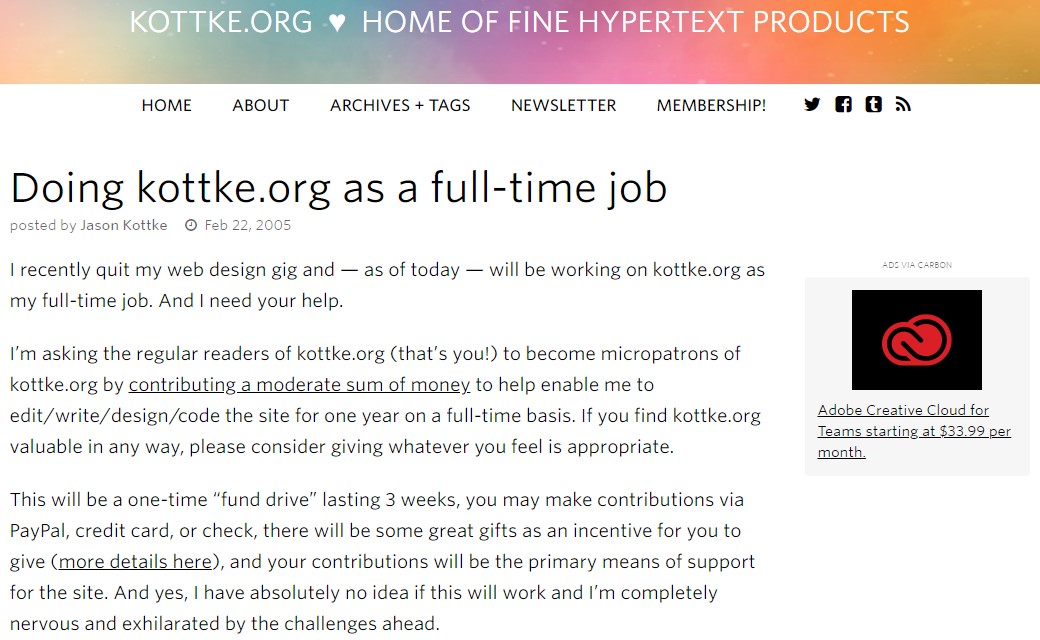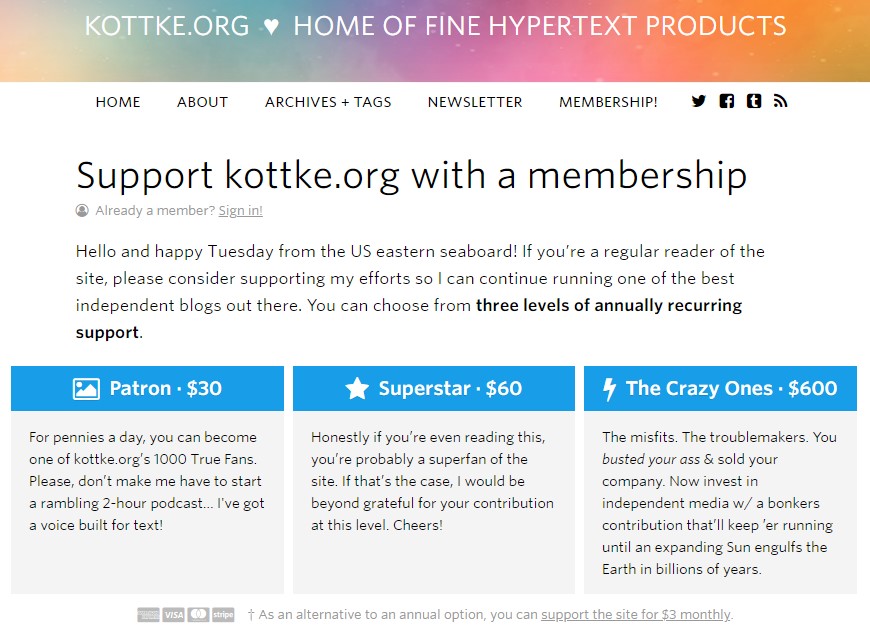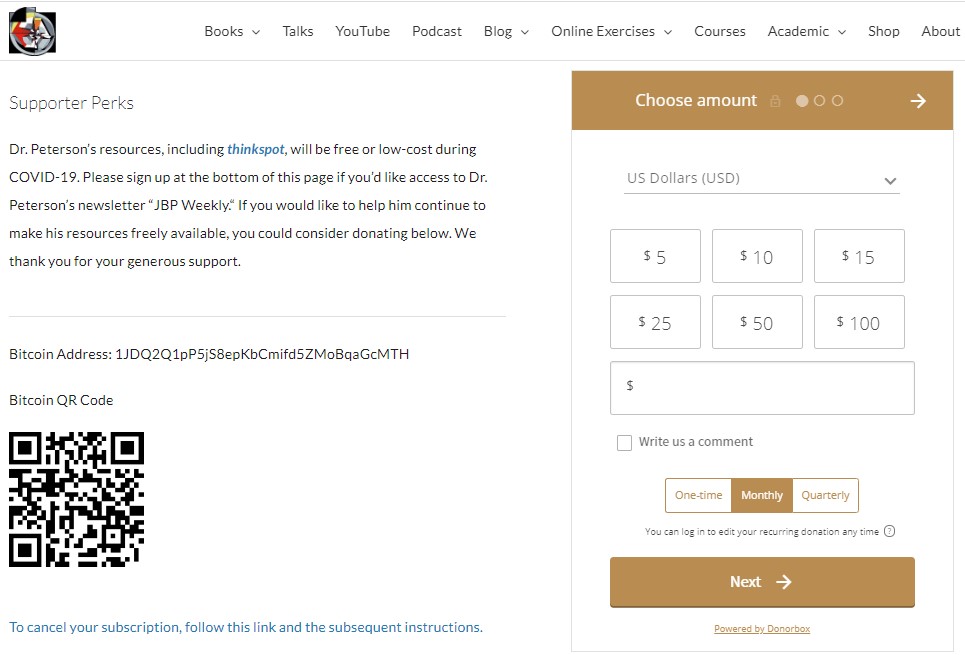Content is your blood, sweat, and tears.
It is your stories, experience, knowledge, hopes and dreams, your innermost thoughts… and you’re putting it all out there for the world to see.
Is it worth it?
That really depends on why you create and share content, and what you do with it once it’s out there in the wild.
If your goal is to somehow carve out a living, you need to make your content pay. (Last time I checked, they still aren’t accepting blog posts as payment at the grocery store.)
Whether you’re using content as a marketing tool to help sell a product or service or counting on the content itself to produce $$$, different methods of monetization can help you maximize the value of each piece.
In this post, we’ll look at a wide range of content monetization options.
Some may be used together, but there are a few you don’t want to mix. (For example, if you’re publishing authoritative marketing content to help your audience buy your product, you obviously do not want to include affiliate links that tell them to buy something else from another seller.)
Make sure your content monetization tactics are not at cross-purposes but don’t be afraid to try a few different ways of monetizing a single piece.
Important note: For the purposes of this article, I’ll refer to written content – blog posts, articles, ebooks, etc. Realize though that all content is a vessel.
Podcasts, videos, graphics, and writing are all simply vessels for communicating your ideas and knowledge to others.
Each can be sold, traded, or monetized in various ways.
If you’re into video or some other medium, keep reading.
This applies to you, as well (often, you can repurpose content and monetize that secondary content, too).
1. Selling Exclusive Rights
This is the fastest way to convert your content to real, tangible money they’ll accept as payment for your hydro bill.
Sell it to someone who needs it enough to pay you for it.
These are typically “work-for-hire” agreements where you relinquish all rights to the work, including any copyright or royalties.
It is a straight exchange of content for money.
If the buyer is involved in the creation process and tells you what to include in the content, you might call this ghostwriting or freelancing.
If you create the content and sell it after the fact (say, in a marketplace for buying and selling content), this is just selling content.
Regardless of the mechanism, the concept is the same: you created a piece of work and are wholly and fully exchanging it for money.
2. Limited Usage Rights
As with the above, the details of the transaction may differ.
You might be hired to create a piece according to a buyer’s specifications, or you could come up with the piece on your own and put it out there for sale.
With limited usage rights, you are granting the buyer the right to use that content for a specific period of time, and perhaps only in certain ways.
You could say, “This is only for use in print,” and limit the usage period to one year, for example.
You are basically licensing the right to reprint the content.
The benefit to you, the content creator, is that you can license that piece of content to several buyers.
You can offer a period of exclusive rights (say, first publication and exclusive for six months) and charge more for that type of license, then open it up to more buyers.
Buyers can save a substantial amount by licensing content vs. having original content produced. This isn’t a great tactic for procuring web content, as we know that original content is best.
But it can help populate an email or print newsletter.
It might also be used as one part of a larger piece of content.
Finding buyers for these types of licenses is difficult when it comes to written content – but it is possible.
There are marketplaces that specialize in this (and when you’re talking about photos, illustrations, videos, etc. there are a ton of places to sell stock as limited usage or full rights).
3. Affiliate Sales
With this tactic, the value exchange is your audience for a percentage of the revenue generated by the sale of a product or service.
It could be that you monetize your email newsletter by promoting a specific product. Or you recommend items to your blog readers.
In any case, there is a trackable link so the seller can tell which affiliate referred which sale.
There are marketplaces for affiliate sales, or you can work directly with the seller.
Affiliate marketing is an industry unto itself and if you’re looking to monetize content in this way, check out Julia McCoy’s 11 Amazing Affiliate Marketing Blogs as a starting point.
4. Subscription/Membership Content
Offer some of your more in-depth, specialized content on a subscription or membership basis.
If you have unique experience, skills, or perspective, people just might pay you to have regular access to that.
This could be in the form of a subscription newsletter or premium video series. Or, it could be a membership site that offers ongoing access to a variety of content types.
You might structure the content as a course, or simply as a library of assets people can access for a certain length of time.
5. Donations
The difference between membership or subscription content and soliciting donations is that with a membership, only those who pay have access to your content.
With a donations structure of monetization, everyone has access and you are asking those with the means to help support that openness.
Patreon and PayPal are two ways you can accept donations from readers, viewers or listeners.
If you’re producing content on a regular basis, your “patrons” may sponsor you with a monthly donation to keep you creating.
Or, simply add a PayPal donation button and sprinkle a few shameless plugs throughout the content.
Blogging-without-starving OG Jason Kottke started making enough money blogging to do it full-time in 2005, when he put his first ask out into the universe.

Today, you can see that his micro-patron strategy has evolved into a full-blown membership program where people can pledge anywhere from $3 to $600 a month.

Clinical psychologist, divisive personality, and bestselling author Jordan Peterson is another great example of content monetization via donations (and subscription, as well).

6. Ads
Again, this is an entire industry and a well-established monetization tactic, so we won’t spend too much time on it.
You might use Google AdSense or any other of hundreds of services to have ads display on your blog, in your videos, in-text, and more.
You might use pay-per-click (PPC) text or display ads, more intuitive native ads, or some combination of both.
Or, you can work directly with advertisers and have them pay for ads placed on your site, in your content, in your emails, etc.
You might charge a rate per thousand impressions (CPM), or a fixed price over a period of time, based on how much you believe that space is worth.
Monetizing your content with ads is a good tactic for publishers and bloggers, and a terrible one for brands.
If you are trying to build trust and engagement, you don’t want to turn off readers and viewers with ads on your site and in your content.
If you hope to make a decent income from ads on your blog, the content has to be popular enough (and your marketing on point enough) that it doesn’t cost you more to drive traffic than you make in ad revenue.
This is where using multiple methods of monetization comes in handy, so you can at least have something coming in while you build up traffic and ad revenue.
7. Sponsored Content
Some might argue that this isn’t a content monetization strategy, but stay with me.
Offering others the opportunity to get in front of your audience with relevant blog posts or videos can be a revenue generator and, if done right, improve the value of your body of content as a whole.
If you’re going to sell publishing space to others in this way, exercise a good degree of editorial control.
Ensure that the sponsored content appearing alongside your own is reflective of the quality, trust, and authority your readers have come to expect of you.
8. Paid Speaking
Chances are pretty good that if you’re writing (and reading and researching and all of the fun things that go with it) about a specific topic on a regular basis, you could be considered something of an expert in it.
Surely you have at least some interest and experience in this thing you’re creating content about.
People, companies and organizations will pay you to talk about it, too.
Casie Gillette has a good primer on public speaking, if you’re just getting started.
Jon Clark also offers a few tips on being a better conference speaker.
Get the most mileage out of your speaking engagements by ensuring plenty of new content comes out of each one.
Provide hashtags and encourage the audience to share and engage on social during your talk.
Share your presentation online.
Create new blog posts from your presentation content and audience feedback and photos.
9. Consulting
Might a person or company benefit from a one-on-one discussion with you about the topic of the content at hand?
If you have some specialized knowledge or expertise to share, give your content readers, listeners, and viewers an option to connect with you for a consultation.
Scheduling apps like Acuity or Calendly make it easy to set specific windows of availability and link to your booking form (or even embed it).
10. Selling Your Own Products
Are you able to create new digital products from the content you’ve created?
Do you have original research, advice, or other such longer-form content with enhanced value to share?
You can charge a premium for reports with unique and original insights.
You can also publish ebooks and make them available in various marketplaces as well as on your website.
Sometimes, your content is so popular and successful that an entire product or service lines grow out of it.
Katie Wells, the author behind Wellness Mama, is a great example of this.
Ten years of blogging about natural, healthier ways to feed and care for her family led to the creation of Wellnesse, her own personal care products line.
Jenny Lawson, a.k.a., The Bloggess, is another great example of content growing into a viable business in its own right.
From her blog has spawned a few bestselling books and a Zazzle store where you can get your very own “Feeling Stabby” coffee mug or Furiously Happy Raccoon mousepad.
Don’t ever let anyone tell you there isn’t a world of possibility out there.
More Resources:
- It’s Time to Put the ‘Marketing’ Back in ‘Content Marketing’
- Content Marketing: The Ultimate Beginner’s Guide to What Works
- Content Marketing KPIs: Your Guide to Picking the Right KPIs for Content
Image Credits
Featured Image: Canva Pro / Modified by author, April 2020





